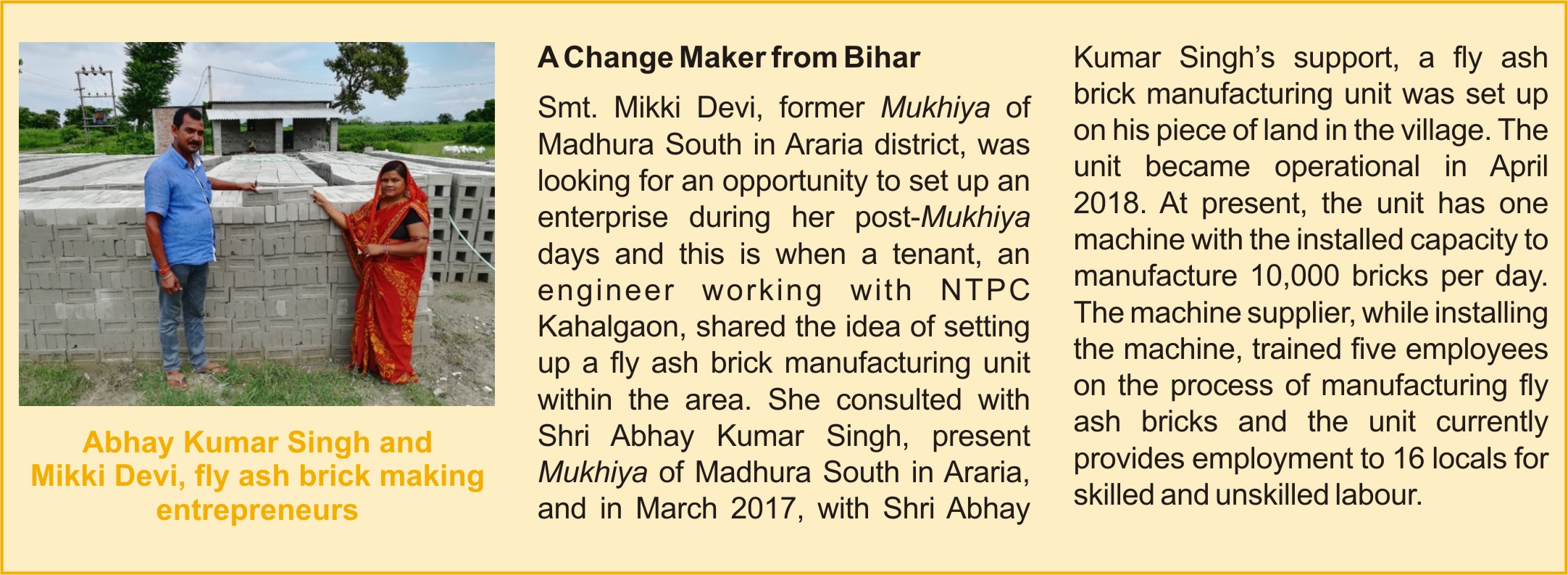|
Green Brick Sector in Bihar
Bihar is one of the fastest growing states in India. The growth rate of Gross State Domestic Product (GSDP) of Bihar is one of the highest among all major Indian states. Bihar is primarily an agrarian state, however, amongst many sectors in Bihar, the construction sector is also one of the significant sectors in the state as it constitutes 9% share in the GSDP and is a major employment generating sector due to the nature of work involved. Within the construction sector, building materials is a key component. Amongst many other materials, brick is one of the important materials for construction. The brick industry in Bihar is currently based on both green and non-green models; but the share of green brick production is currently significantly low. Approximately 23 billion red bricks are annually1 produced in Bihar based on decentralised energy intensive, resource depleting and highly polluting production systems using Fixed Chimney Brick Kilns. While manufacturing these red bricks approximately 65 million tonnes2 of fertile soil is stripped off every year. The Ministry of Environment, Forests and Climate Change issued various notifications in last few decades stipulating the use of fly ash bricks in construction in a radius of 100 km around the thermal power plants, but the compliance to the notification is yet to be achieved. Fiscal measures like reduction of excise duty are also granted to the entrepreneurs. Bihar currently has an installed capacity to produce 0.3 billion fly ash bricks. It has the potential to contribute following environmental benefits if the fly ash units are operational at full capacity: • 0.84 million tonnes of fertile soil is saved • 0.45 million tonnes of fly ash utilised • 0.202 million tonnes of carbon saved • 0.063 million tonnes of coal saved However, currently, only 54% of fly ash brick enterprises are operational in Bihar3. The units that were shut down reported lack of market demand as one of the prime reasons of closing the enterprises. Demand for these bricks is low due to lack of awareness amongst the producers and consumers regarding this eco-friendly technology and the preference for traditional clay bricks over fly ash bricks. Many public infrastructure projects are currently not able to utilise 100% fly ash bricks due to either non-timely supply of good quality fly ash bricks or preference for traditional bricks and therefore lack of market demand that deters the entrepreneurs from setting up more units. Going forward, effective implementation of the government policies; continuous awareness campaigns at the block and district levels of Bihar on the financial and environmental merits of fly ash bricks and the subsidies and incentives provided by the government; improving and ensuring the quality of fly ash bricks and improving access to formal financial institutions and technology know-how are some of the key measures required for scaling up of the technology. ■
Shruti Issar 
References: 1 Average annual brick production of 1 FCBTK is 30 lakh. Assuming all bricks kilns is functional. 2 1 brick consumes 2.8 kg of soil 3 Development Alternatives in 2018 conducted a detailed survey of all the 38 districts in Bihar to map fly ash bricks units
|